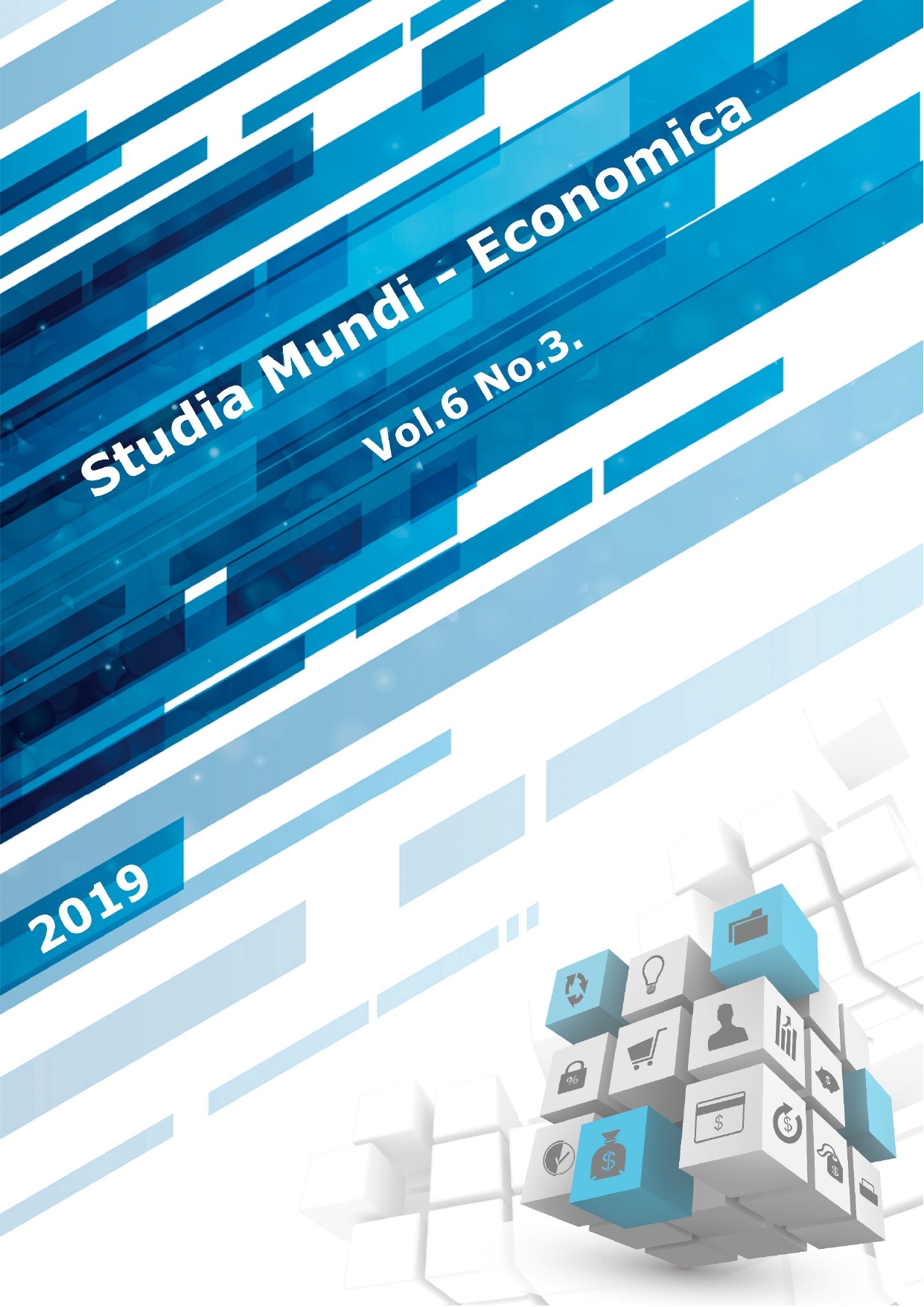Difficulties of the customer-supplier relationship at small enterprises
DOI:
https://doi.org/10.18531/Studia.Mundi.2019.06.03.94-104Keywords:
difficulty, problem, small enterprises, supplier, relationshipAbstract
It is vital for customers to build coordinated and cooperative long-term relationships with other companies. According to Mohr and Spekman (1994) a partnership is such an intended relationship of strategic importance between two independent companies which have shared goals, strive for mutual benefits and there is strong interdependence between them. Like in any relationship, there are difficulties, problems, and conflicts in the relationship between the members of the supplier chain, as the parties try to promote their interests. In the course of this process, there might be disagreement, difficulties and problems, which should not be ignored, and some kind of a solution must be found. In this study, we deal with the problems of small enterprises.
References
It is vital for customers to build coordinated and cooperative long-term relationships with other companies. According to Mohr and Spekman (1994) a partnership is such an intended relationship of strategic importance between two independent companies which have shared goals, strive for mutual benefits and there is strong interdependence between them. Like in any relationship, there are difficulties, problems, and conflicts in the relationship between the members of the supplier chain, as the parties try to promote their interests. In the course of this process, there might be disagreement, difficulties and problems, which should not be ignored, and some kind of a solution must be found. In this study, we deal with the problems of small enterprises.
Keywords: difficulty, problem, small enterprises, supplier, relationship JEL classification: M16; L22 LCC: T175-178
Abend, J.M. (2001): Strukturwandel in der Automobilindustrie und strategische Optionen mittelständischer Zulieferer, Verlag V. Florentz, München
Balázs, I. (2011): Supply chain management, Budapesti Gazdasági Főiskola, 2014, Budapest, On-line:http://www.tankonyvtar.hu/hu/tartalom/tamop412A/2011- 0003_14_ellatasi_lanc_menedzsment/2_1_az_ellatasi_lanc_reszteruletei_wN3yWeE 1v92skUSd.html Download: 2017.04.14.
Cannon, J. P. – Perrault, W. D. (1999): Buyer-Seller relationships in business markets, Journal of Marketing Research, Vol. 36, No. 4(Nov., 1999), pp. 439-460.
Clements, M. D. J. – Dean, D.L. – Cohen, D.A. (2007): Proposing an Operational Classification Scheme for Embryonic Cooperative Relationships. Journal of Management and Organization, Vol. 13 (1), pp. 51-64.
Csont, Á. (2007): Risks in Foreign Trade – Risk Management in BCS H Hungary Kft., Budapest Gazdasági Főiskola, Budapest, pp. 28-39.
Dannenberg, J. (2003): Die Automobilindustrie und Markentreue, Betriebswirtschaftlicher Verlag; In: Gottschalk B. – Kalmbach R. (Hrsg.): Markenmanagement in der Automobilindustrie: Die Erfolgsstrategien internationaler Top-Manager, Wiesbaden, pp. 87-101.
Disselkamp, M. – Schüller, R. (2004): Lieferantenrating, Instrumente, Kriterien, Checklisten, Gabler Verlag, 1. Auflage, Wiesbaden, p. 155.
Ebel, B. – Hofer, M. B. – Al-Sibai, J. (2004): Automotive Management – Strategie und Marketing in der Automobilwirtschaft, Springer Verlag, Berlin, pp.171-191.
Gottschalk, B. (2003): Markenmanagement als zentraler Erfolgsfaktor in der Automobilindustrie, Gabler Verlag
Hartmann, H. (2006): Lieferantenentwicklung - Der letzte Schliff, BA Beschaffung aktuell, Heft 8, p.
Hartmann, E. – Reuter, C. (2009): Einblicke in die Vorzeigebranche Automobil - Was kann der Einkauf? BA Beschaffung aktuell, Heft 3, p. 32
Hinde, R. A. (1979): Towards understanding relationships, Published in cooperation with European Association of Experimental Social Psychology by Academic Press, University of Michigan
Little, E. – Marandi, E. (2005): Relationship Marketing, Akadémia Kiadó, Budapest, p. 224
Majoros P. (1999): Procurement Economics of Industry Companies, Műszaki Könyvkiadó, Budapest, pp. 32-53.
Mohr, J. – Spekman, R. (1994): Characteristics of Partnership Success: Partnership Attributes, Communication Behaviour and Conflict Resolution Techniques, Strategic Management Journal 15, pp. 135-152.
Morauszki, K. – Lajos, A. (2016): Vevő – beszállító kapcsolatok és jellemzőik az autóiparban, Kihívások és tanulságok a menedzsment területén c. konferencia, International Journal of Engineering and Management Sciences Műszaki és Menedzsment Tudományi Közlemények Vol. 1. (2016). No. 1.
On-line: http://ijems.lib.unideb.hu/cikk/cikk/576a7428463fe
Peelen, E. (2005): Customer Relationship Management, Pearson Education Limited, London, pp. 25-26.
Poeisz, Th. B. C. – W. F. van Raaij (1993): The quality of industrial relationships; an economic psychological viewpoint. Proceedings Annual Colloquium van de International Association for Research in Economic Psychology, Moskou, pp. 38-55.
Rinehart, L. M. – Eckert, J.A. – Handfield, R. B. – Page, T. Jr. – Atkin, T. (2004): An Assessment of Supplier – Customer Relationships. Journal of Business Logistics, Vol. 25 (1), pp. 25-62.
Sarkis, J. – Talluri, S. (2002): A Model for Strategic Supplier Selection. Journal of Supply Chain Management, Vol. 38 (1), 2002, pp. 18-28.
Sheth, J. N. und Sharma, A. (1997): Supplier Relationships: Emerging Issues and Challenges. Industrial Marketing Management, Vol. 26 (2), pp. 91-100.
Smit, E. G. – Bronner, A. E. – Tolboom, M. E. (2007): Relationship Quality and Its Value For Personal Contact; in Journal of Business Research 60(6), pp. 627-633.
Szegedi, Z. –Prezenszki, J. (2003): Logistics Management, Kossuth Kiadó, Budapest, pp. 394-448.
Svéhlik, Cs. (2005): Challenges and trends in the structure of global automotive industry, Doktori (PhD) értékezés, Sopron, pp.113-124.
Vaillant, Y. –Lafuente, E. (2007): Do Different Institutional Frameworks Condition the Influence of Local Fear of Failure and Entrepreneurial Examples over Entrepreneurial Activity? Entrepreneurship& Regional Development, Vol. 19. July, 2007, pp. 313–337.
Weis, M. – Huber, F. (2000): Der Wert der Markenpersönlichkeit, Wiesbaden.
Downloads
Published
Issue
Section
License
Copyright (c) 2019 Kinga Szilvia Morauszki

This work is licensed under a Creative Commons Attribution-NonCommercial-NoDerivatives 4.0 International License.
A folyóirat Open Access (Gold). Cikkeire a Creative Commons 4.0 standard licenc alábbi típusa vonatkozik: CC-BY-NC-ND-4.0. Ennek értelmében a mű szabadon másolható, terjeszthető, bemutatható és előadható, azonban nem használható fel kereskedelmi célokra (NC), továbbá nem módosítható és nem készíthető belőle átdolgozás, származékos mű (ND). A licenc alapján a szerző vagy a jogosult által meghatározott módon fel kell tüntetni a szerző nevét és a szerzői mű címét (BY).






